You can protect your fitness data by enabling AES-256 encryption and biometric authentication on your device, regularly reviewing app permissions to limit third-party access, and using multi-factor authentication for cloud accounts. Configure privacy settings to restrict data sharing with advertisers and insurance companies, avoid pairing devices on public networks, and immediately enable remote wipe capabilities in case of theft. Since fitness apps often lack HIPAA protections, understanding these vulnerabilities and implementing proper security measures will help you maintain control over your sensitive health information.
Understanding What Data Your Fitness Tracker Collects
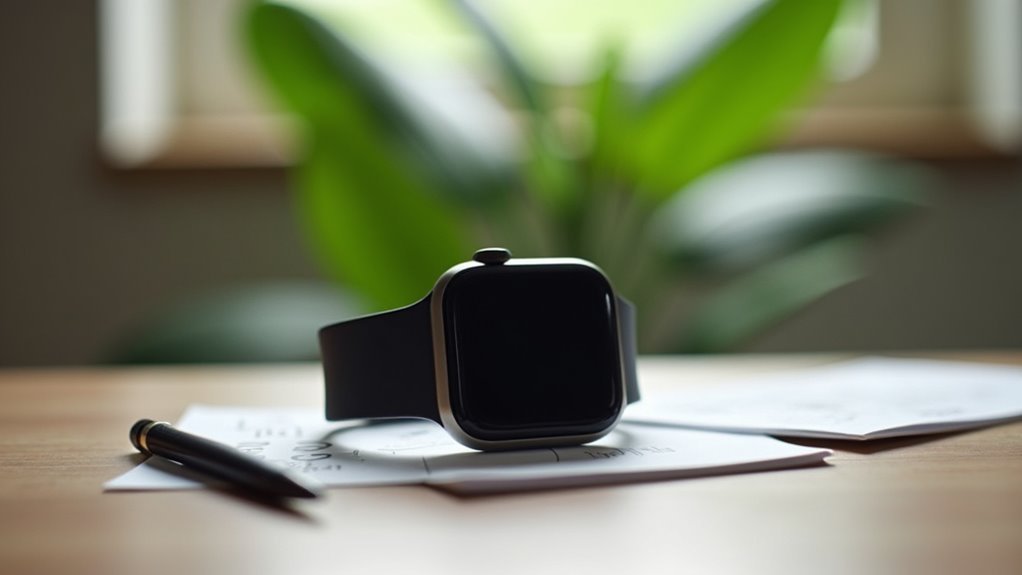
Before you can protect your fitness data, you’ll need to understand exactly what information your device collects about you.
Your fitness tracker gathers far more than just step counts. It monitors your activity data including steps, distance, and movement types like walking or cycling. The device also tracks physiological metrics such as heart rate, blood oxygen levels, and sometimes blood pressure through optical sensors.
Modern fitness trackers are sophisticated monitoring devices that continuously collect comprehensive health and activity data far beyond simple step counting.
Your tracker calculates energy expenditure by estimating calories burned and metabolic rate. Sleep metrics provide detailed analysis of duration, stages including light, deep, and REM sleep, plus overall quality assessments.
Many devices include additional features like exercise tracking, sedentary alerts, and menstrual cycle monitoring. Modern fitness trackers increasingly incorporate AI and machine learning to enhance their monitoring capabilities and provide more accurate health insights.
This extensive data collection happens through accelerometers, gyroscopes, heart rate monitors, GPS modules, and sophisticated algorithms that process everything continuously.
Biometric Authentication Methods for Enhanced Security
While your fitness tracker collects extensive personal data, you can greatly enhance its security through biometric authentication methods that verify your identity using unique biological characteristics.
You’ll find several options available: fingerprint recognition scans your unique patterns, facial recognition analyzes your facial geometry, and iris scanning provides highly secure authentication.
Your wearable’s PPG sensors offer particularly effective cardiac biometrics by detecting blood volume changes through LED light absorption. These systems achieve over 90% accuracy while working passively in the background without requiring active input.
Behavioral biometrics add another layer by analyzing your step cadence, motion patterns, and usage habits. The non-invasive data acquisition methods make behavioral biometrics particularly appealing compared to traditional physical authentication systems.
Combining multiple biometric methods—like fingerprint, PPG, and behavioral data—creates robust multimodal authentication that markedly reduces vulnerabilities and protects your sensitive health information.
Encryption Standards in Modern Sportwatches
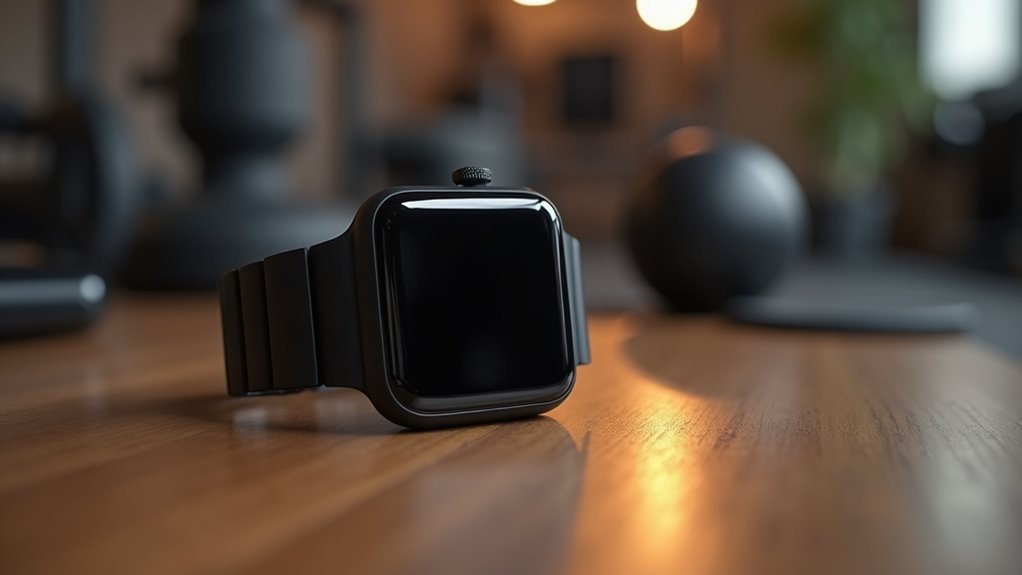
When you’re choosing a sportwatch, the encryption standards it employs determine how well your sensitive health data stays protected from unauthorized access. Modern devices typically use AES-256 encryption, which provides robust security for both stored and transmitted data. Leading manufacturers also implement Ascon-based cryptography, a new NIST-standardized method that’s particularly effective for resource-constrained wearables.
| Encryption Type | Security Level | Device Compatibility |
|---|---|---|
| AES-256 | High | Most modern devices |
| Ascon-based | High | Newer models |
| Bluetooth encryption | Medium-High | Standard feature |
| End-to-end | Very High | Premium devices |
Your sportwatch’s Bluetooth connection should use encrypted channels with secure pairing mechanisms. Premium devices offer end-to-end encryption between your watch and the server, while some vendors add custom protocols for extra protection. While encryption isn’t mandatory for all health devices, implementing encryption solutions prevents unauthorized access to your personal health information stored on wearables.
Privacy Settings You Should Configure Immediately
Having strong encryption on your sportwatch means nothing if you leave privacy settings wide open. Start with your device’s system settings—toggle off unnecessary permissions for contacts, location, and other non-essential data access.
Strong encryption becomes irrelevant when privacy settings remain wide open, exposing your personal data unnecessarily.
Configure location services per app, choosing “while using” instead of “always” when possible.
Within each fitness app, navigate to Settings > Privacy to control who sees your profile, activities, and workout details. Change default settings from public to private or selected contacts only.
Disable features like public leaderboards, heatmaps, and route sharing that expose your location patterns.
Regularly audit which apps access your fitness data through device integration settings. Disconnect inactive wearables and review sync permissions. For Health app users, manage data source priority to ensure the most accurate information takes precedence when multiple devices track the same metrics.
Remember to check these settings after app updates, as they often revert to default configurations.
Data Sharing Permissions and Third-Party Access
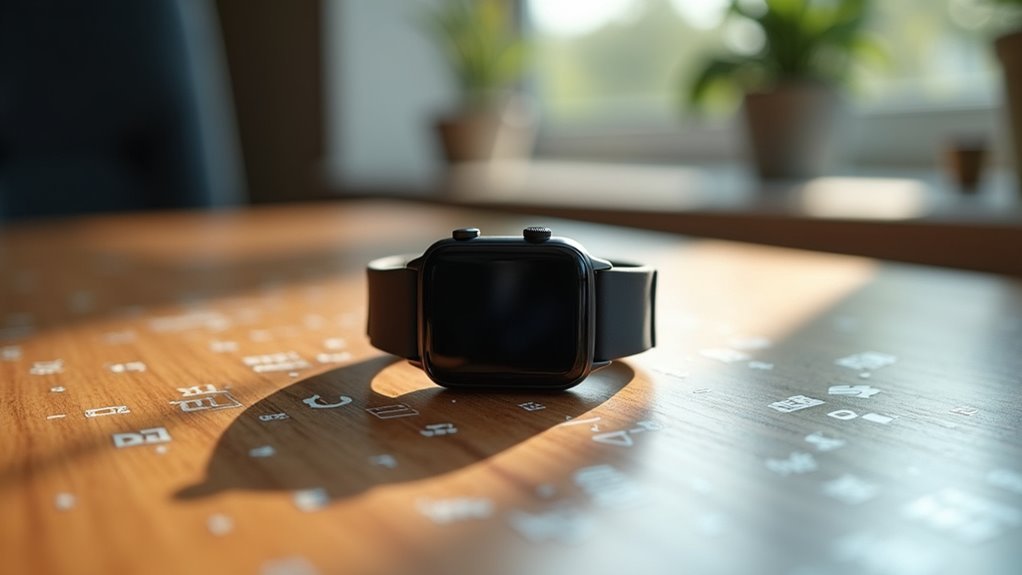
Beyond device-level settings, you’ll need to audit and control how your fitness data flows to third-party apps and services.
Your Apple Health app can share data with up to five individuals, but you control exactly what’s shared. Third-party apps like Meta’s MOVE can access your data through Health Connect, creating additional privacy risks.
- Review app permissions regularly – Check which apps have access to your fitness data and revoke unnecessary permissions.
- Disconnect unused apps immediately – Remove apps you no longer use and delete any data they’ve collected.
- Choose security-focused apps only – Select apps with strong security measures and transparent privacy policies.
- Enable two-factor authentication – Add extra security layers to accounts handling your fitness data.
Apple Health sharing requires an iCloud account with two-factor authentication enabled for security. You can stop sharing data anytime.
Secure Storage Solutions for Health Metrics
You’ll need robust encryption methods to protect your fitness data when it’s stored on devices or cloud platforms.
AES encryption serves as the gold standard for securing your health metrics both at rest and during transmission between your wearables and apps.
Implementing proper access controls guarantees only authorized applications and users can retrieve your sensitive fitness information. Healthcare organizations face an average breach cost of $10.93 million, highlighting the critical importance of protecting any health-related data including fitness metrics.
Encryption Best Practices
When protecting your fitness data, implementing robust encryption serves as your first line of defense against unauthorized access and potential breaches.
You’ll need to follow specific best practices to guarantee maximum security for your health metrics.
Start by using only the strongest encryption algorithms available. AES encryption provides the gold standard for securing your fitness data. You should also rotate your encryption keys regularly to prevent potential compromises.
Here are essential encryption practices you must implement:
- Update encryption methods regularly to stay ahead of evolving security threats
- Anonymize your data whenever possible to reduce personal breach risks
- Minimize data collection by storing only necessary information for functionality
- Maintain proper key management through secure storage and regular rotation schedules
Remember that data encryption keeps user data unreadable to unauthorized individuals, adding a crucial layer of security during data transmission between your devices and fitness platforms.
Access Control Methods
While encryption protects your fitness data during transmission and storage, you must also control who can access that information in the first place. You’ll need to implement multiple layers of access control to secure your health metrics effectively.
| Method | Security Level | Best For |
|---|---|---|
| PIN/Keypad | Basic | Simple device access |
| Biometric | High | Personal devices |
| Multi-factor | Highest | Sensitive data storage |
| App-based | Medium | Daily convenience |
You should enable two-factor authentication on all fitness apps and configure privacy settings to restrict data sharing. Review third-party app permissions regularly and revoke access for unused services. Monitor your accounts for suspicious login attempts and update software promptly to patch security vulnerabilities. Data analytics features can help you track usage patterns and identify unusual access behavior that might indicate unauthorized use of your fitness accounts. These practices create robust barriers against unauthorized access to your personal health information.
Recognizing and Avoiding Privacy Policy Pitfalls
Although fitness apps promise to help you achieve your health goals, their privacy policies often contain hidden traps that can expose your most sensitive personal information.
Most fitness apps aren’t subject to HIPAA regulations, allowing them to share your data more freely than you’d expect. These policies use deliberately vague language that enables broad data collection without explicit consent. The scope of this collection is extensive, with apps gathering an average of 15.2 different data points from each user.
Here’s what you should watch for:
- Broadly-worded categories – Apps often label sensitive data like gender identity and veteran status as “other info”
- Third-party sharing clauses – Your data can be sold to insurance companies and advertisers
- Non-marketing usage – Only 12% of collected data is used for marketing; the rest serves undisclosed purposes
- Lack of federal oversight – No extensive laws protect your fitness data from being sold
Real-Time Monitoring of Data Access Attempts
You’ll need robust detection systems that continuously monitor who’s accessing your fitness data and when suspicious activity occurs.
Setting up proper alert configurations guarantees you’re notified immediately when unauthorized access attempts happen, giving you the chance to respond before any damage is done.
These monitoring tools work best when they’re tailored to your specific devices and apps, creating a personalized security network around your personal health information. Advanced fitness monitoring systems can track multiple athletes simultaneously, making data protection even more critical when managing team or group fitness information.
Detection Systems Implementation
When fitness apps and wearable devices collect your personal health data, implementing robust detection systems becomes critical for identifying unauthorized access attempts in real-time.
You need advanced monitoring capabilities that can handle large volumes of data from multiple sources while providing immediate alerts when suspicious activity occurs.
Modern detection systems leverage AI algorithms and machine learning to analyze access patterns and distinguish between normal and abnormal behaviors.
These systems continuously learn and adapt to new threats, improving their accuracy over time. Organizations must ensure HIPAA compliance when implementing these detection systems to protect sensitive health information and maintain regulatory standards.
Essential detection system components include:
- AI-powered pattern recognition that identifies unusual data access behaviors automatically
- Real-time alert mechanisms providing instant notifications of potential security breaches
- Comprehensive data logging tracking all access attempts across your fitness platforms
- Integration capabilities connecting seamlessly with existing security infrastructure for complete protection
Alert Configuration Methods
With detection systems in place, configuring alert parameters properly determines how quickly you’ll know about potential data breaches.
You’ll need to set access frequency thresholds that flag repeated suspicious attempts while avoiding false positives. Configure geolocation filters to detect access from unexpected regions, and implement device reputation scoring to identify potentially harmful sources.
Set up multiple delivery channels including push notifications, SMS, and email to guarantee you’re immediately notified.
Dashboard interfaces let you monitor real-time access attempts and manage ongoing alerts effectively. Customize sensitivity levels based on data types—prioritize alerts for highly confidential fitness metrics like medical conditions over basic step counts.
Machine learning models improve accuracy by learning your normal access patterns, reducing alert fatigue while maintaining security. Advanced sensor technology enables more precise monitoring of data access patterns across connected fitness devices.
Best Practices for App Permission Management
App permission management forms the foundation of protecting your fitness data privacy, requiring you to take control of what information apps can access on your device.
Taking control of app permissions isn’t optional—it’s your first line of defense against fitness data breaches and privacy violations.
You should only grant permissions that are essential for core functionality and deny unnecessary access requests. When apps request permissions, they should provide clear justifications at the moment of need rather than during installation.
Effective permission management requires ongoing attention:
- Review permissions regularly – Audit app permissions monthly and revoke access that’s no longer needed.
- Remove unused apps immediately – Uninstall fitness apps you don’t actively use to reduce vulnerability exposure.
- Enable runtime permissions – Allow apps to request access only when specific features are activated.
- Update apps consistently – Install updates promptly to receive critical security patches and permission improvements.
Choose fitness apps from established brands that have proven track records of implementing robust security measures and responding quickly to potential vulnerabilities.
Cybersecurity Threats Targeting Wearable Devices
Your wearable device faces multiple cybersecurity threats that can compromise your fitness data and personal information.
Attackers exploit weak points like unsecured data transfers, proximity-based vulnerabilities, and inadequate authentication protocols to access your sensitive health metrics. Cybercriminals may exploit wearables as entry points for broader security breaches and data exfiltration targeting your connected devices.
Understanding these common attack vectors and implementing proper security measures will help you protect your data from unauthorized access and potential breaches.
Common Attack Vectors
As cybercriminals increasingly target the growing wearable device market, understanding the various attack vectors they employ becomes essential for protecting your fitness data and personal privacy.
These threats exploit vulnerabilities across multiple entry points, from wireless connections to cloud storage systems.
Attackers commonly target your devices through:
- Wireless network exploitation – Compromising Wi-Fi and Bluetooth connections to intercept data transmissions
- Mobile app vulnerabilities – Exploiting security gaps in companion apps to access stored information
- Cloud service breaches – Targeting inadequately protected servers where your fitness data is stored
- Physical device tampering – Gaining direct access to lost, stolen, or unattended wearables
Your fitness tracker’s lack of robust encryption and weak authentication methods create additional opportunities for cybercriminals to access sensitive biometric data and personal information. Medical wearables like pacemakers and insulin pumps face particularly severe risks since cybersecurity breaches can have life-threatening consequences for patients who depend on these devices.
Device Vulnerability Points
Wearable devices create multiple entry points that cybercriminals exploit to compromise your personal data and privacy. Your smartwatch or fitness tracker becomes vulnerable during device pairing when attackers intercept data exchanges through weak encryption protocols. Six major smartwatch brands have demonstrated these pairing vulnerabilities during security testing.
| Vulnerability Point | Risk Level |
|---|---|
| Device Pairing Process | High |
| Proximity-Based Connections | Medium-High |
| Cloud Data Transfers | High |
Proximity-based technologies like Bluetooth and NFC expose you to data harvesting without physical device access. Your risk increases considerably in public spaces with multiple wireless access points. Cloud storage vulnerabilities allow remote access to your health data, while weak authentication mechanisms enable advanced persistent threats. Interconnected device ecosystems amplify these risks across your entire network. Many wearable devices broadcast data unencrypted over Bluetooth connections, creating additional opportunities for cybercriminals to intercept sensitive information.
Prevention Best Practices
While cybercriminals continuously develop sophisticated methods to exploit wearable device vulnerabilities, implementing thorough security measures can greatly reduce your risk of data compromise.
You’ll need to establish multiple layers of protection across device pairing, data transmission, and cloud storage to safeguard your fitness information effectively. Additionally, understanding your data ownership rights becomes crucial since changes in company ownership can significantly alter privacy policies and how your personal information is handled.
- Secure your pairing process by enabling device visibility only during setup and regularly reviewing your paired devices list to remove unused connections.
- Encrypt data transmissions using industry-standard protocols and avoid syncing through unsecured public Wi-Fi networks.
- Strengthen cloud security with multi-factor authentication and encrypted backup services that comply with privacy regulations.
- Maintain strong access controls through unique passwords, two-factor authentication, and regular updates to your security settings.
Regulatory Compliance and Your Rights as a User
When you sync your fitness tracker or upload workout data to an app, you’re entering a complex regulatory landscape where your privacy rights vary dramatically depending on where you live.
As of 2025, 19 states have enacted extensive privacy laws, with California, Nevada, and Washington leading stricter health-focused protections. Eight additional states are implementing new privacy laws this year.
Your fitness data often falls outside HIPAA’s protection, creating regulatory gaps.
However, state laws like CMIA and MHMDA provide broader coverage for health information, including fitness data and sensitive health conditions. You now have expanded rights to access and delete your personal data, with some state protections exceeding federal standards.
Enforcement actions are increasing, particularly regarding sensitive data processing, giving you stronger recourse when companies mishandle your information. The fragmented privacy approach in the U.S. creates financial and technical burdens for fitness app companies, which may ultimately impact the features and services available to you.
Emergency Data Protection During Device Loss
Your fitness device contains months or years of sensitive health data, making its loss a serious privacy emergency that demands immediate action.
Years of personal health information stored on your fitness tracker creates a significant privacy risk if the device falls into the wrong hands.
You’ll need to act quickly to protect your information from unauthorized access.
Start by using tracking features like Find My iPhone to locate your device. If you can’t recover it immediately, enable remote wipe or lock options through your device manufacturer’s website. For iPhones with sensitive data, consider activating Stolen Device Protection which provides enhanced security measures when your device is away from familiar locations.
Contact your service provider for additional assistance and inform relevant parties about potential data exposure.
- Enable remote wipe immediately through your device manufacturer’s portal to prevent unauthorized data access
- Use tracking features like Find My iPhone to locate your lost device before someone else finds it
- Contact your service provider for emergency assistance and additional security measures they can implement
- Inform relevant parties including healthcare providers if sensitive medical data might be compromised
Future-Proofing Your Privacy as Technology Evolves
As fitness technology rapidly advances and privacy regulations multiply across states, you’ll need strategies that adapt to an evolving landscape where your personal health data faces new risks and protections.
With wearable revenues reaching $3.8 billion by 2025 and AI-powered personalization becoming standard, you’re generating more sensitive data than ever. While 16 extensive state privacy laws will provide additional protections by 2025’s end, you can’t rely solely on regulations.
Stay informed about emerging technologies before adopting them. Choose fitness platforms that demonstrate transparent data handling practices and offer granular privacy controls. Regularly review and update your privacy settings as features evolve. The integration of real-time data in modern fitness applications means your biometric information is being processed instantaneously, requiring heightened vigilance about who has access to this continuous stream of personal health metrics.
| Privacy Strategy | Current Action | Future Consideration |
|---|---|---|
| Data Minimization | Disable unnecessary tracking | Evaluate new sensors/metrics |
| Platform Selection | Research current policies | Monitor regulatory compliance |
| Setting Management | Review quarterly | Adapt to feature updates |
| Awareness Building | Follow privacy news | Understand emerging risks |
Frequently Asked Questions
Can Insurance Companies Access My Fitness Data to Adjust My Premiums?
Insurance companies can’t directly access your fitness data without permission, but they’re exploring programs where you’d voluntarily share tracker information for potential premium discounts or health incentives through partnerships.
What Happens to My Fitness Data if the Company Goes Bankrupt?
Your fitness data becomes a company asset that’s typically sold to new owners during bankruptcy proceedings. You’ll likely face new privacy policies, and there’s no guarantee your data won’t be transferred or misused.
How Do I Permanently Delete All My Historical Fitness Data?
You’ll need to access each app’s settings separately. For Apple Health, use the Browse tab and delete data categories. For Google Fit, select “Delete All” in Manage your data settings.
Can Employers Legally Require Access to Employee Fitness Tracker Data?
Employers can’t legally require fitness tracker access in most cases. You’re generally protected if programs are mandatory, but voluntary opt-in programs with clear consent are typically legal.
Which Fitness Brands Have the Worst Track Record for Data Breaches?
You’ll find Under Armour’s MyFitnessPal suffered a massive 150 million user breach, while Town Sports International exposed 600,000 customers’ data through an unprotected database, making them notable offenders.
In Summary
You’ve learned how to protect your fitness data from collection to storage. Don’t forget to regularly review your privacy settings, limit third-party access, and keep your device’s firmware updated. If you lose your tracker, act quickly to secure your accounts. As fitness technology evolves, you’ll need to stay informed about new privacy threats and protection methods. Your health data’s worth protecting—make these security practices part of your routine.

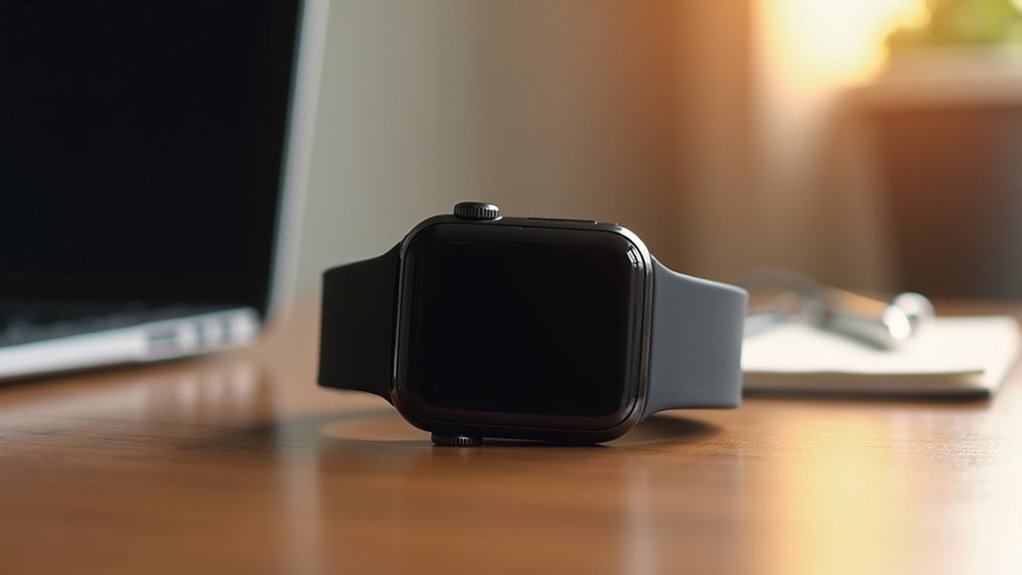
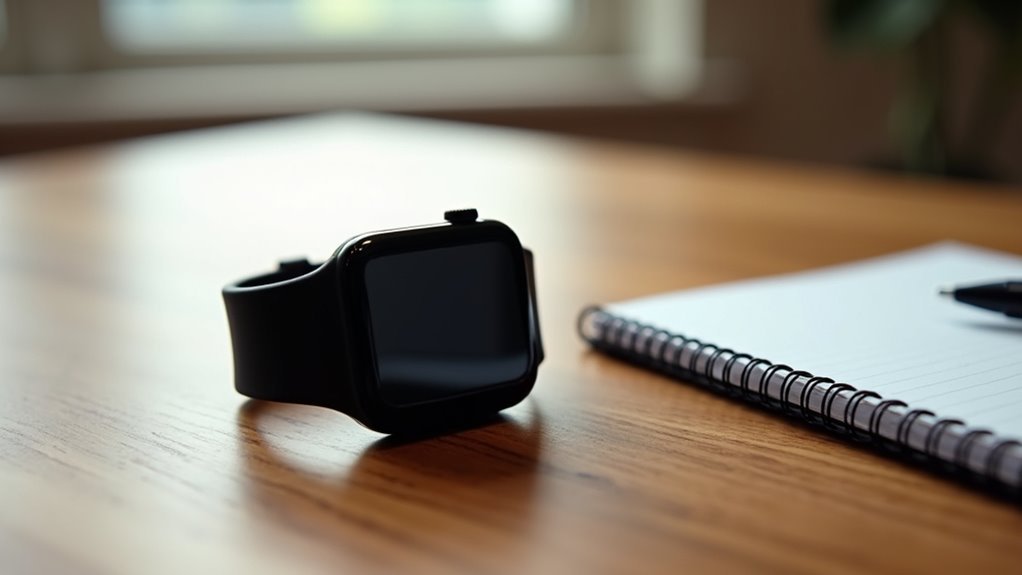
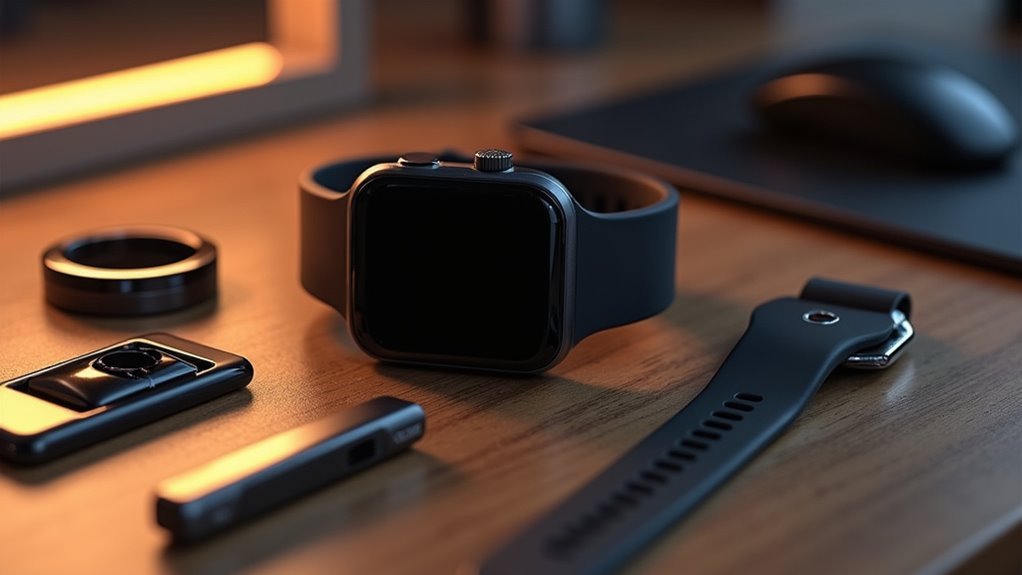
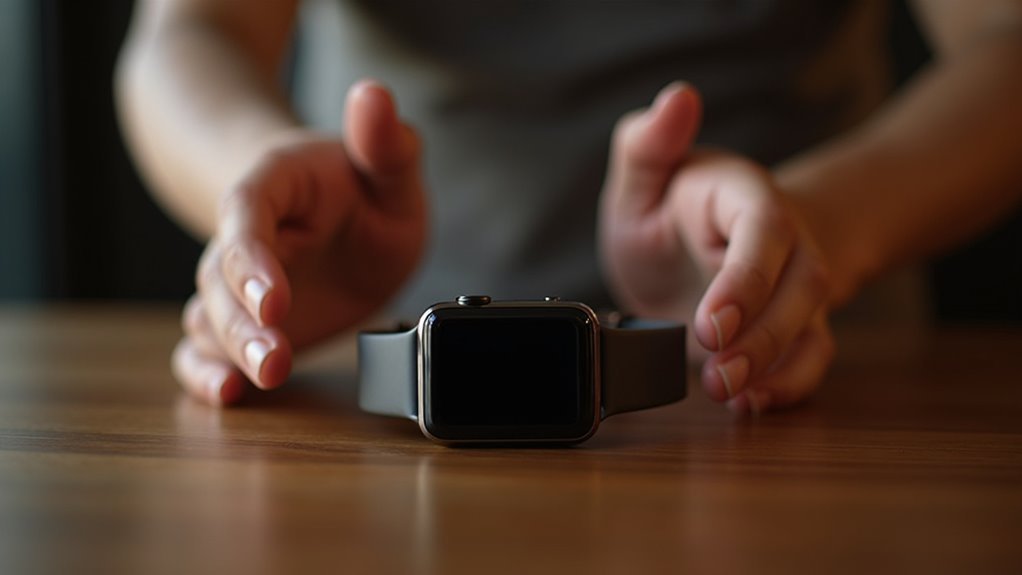
Leave a Reply